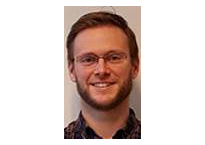“In our research proposal, we focus on increasing second messengers in oligodendrocyte precursor cells to induce maturation towards myelinating oligodendrocytes yielding a repair-inducing phenotype.”
Even though the currently available MS therapeutics are reliable, constantly improving, and very effective in the initial stages of MS, they have limited efficacy in preventing the transition towards the progressive phase and are no longer effective in this progressive stage. During these chronic stages, when little inflammation is present, endogenous repair mechanisms become insufficient and cause a gradually worsening of the disability. Hence, we investigate novel targets to induce repair in progressive MS. In this project, we define exactly which cleaving proteins are responsible for repair processes. Together, our findings will provide an incentive to further develop novel pharmaceutics in the treatment of progressive MS.
Project granted by the Ligue Nationale Belge de la Sclérose en Plaques, asbl- Nationale Belgische MS Liga, vzw
the scientific project
Even though the currently available MS therapeutics are reliable, constantly improving, and very effective in the initial stages of MS, they have limited efficacy in preventing the transition towards the progressive phase and are no longer effective in the progressive stage. During these chronic stages, endogenous remyelination becomes insufficient and causes a gradually worsening of the disability. Previous work showed that increasing second messengers enhances remyelination and reverses disability in an animal model for MS. However, unwanted side effects emerge. In this project we investigate which targets are most efficient in inducing remyelination while avoiding the side-effects. Due to the current lack of specific inhibitors, we apply an innovative molecular tool to suppress their subtype-specific activity.
